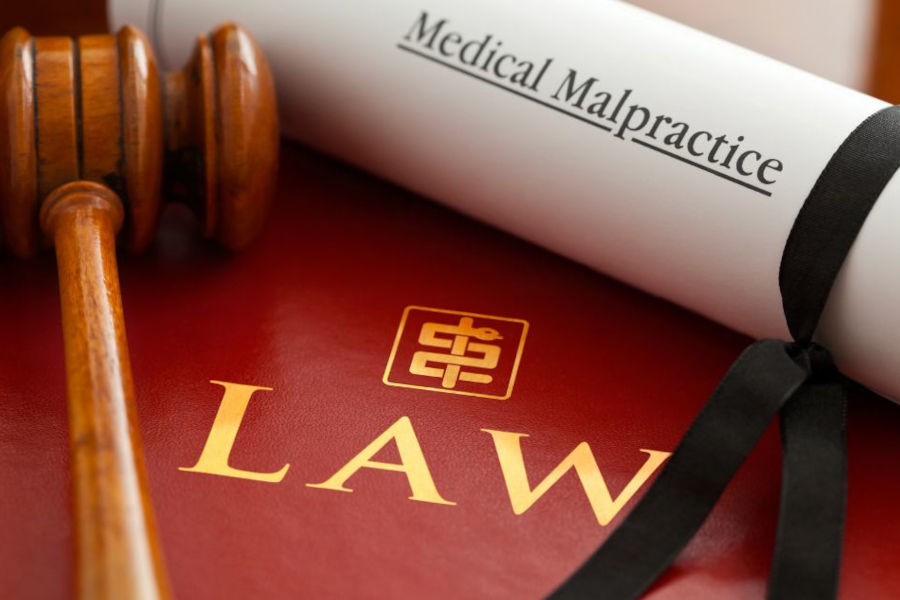Medical malpractice is now the third-leading cause of death in the United States, with hundreds of thousands of people affected each year. Healthcare professionals are expected to follow a standard practice of care, and deviating from such standards may result in negligence or medical malpractice.
Turnbull Legal Group discusses the various medical malpractice scenarios in Texas. With a focus on understanding the nuances of misdiagnoses and negligence, you’ll be better equipped to deal with such cases and safeguard your rights.
What Is Medical Malpractice In Texas?
Medical malpractice in Texas encompasses a range of scenarios where healthcare professionals deviate from the accepted standard of care, leading to harm or injury to the patient. This breach of duty can take various forms, from diagnostic errors to surgical mistakes, ultimately compromising the well-being of individuals seeking medical treatment.
One of the key elements in establishing medical malpractice is proving that the healthcare provider’s actions deviated from the recognized standard of care. This standard is determined by comparing the practitioner’s actions to those of a reasonably skilled and competent professional in the same field under similar circumstances.
Misdiagnosis: Understanding The Impact On Patients
Misdiagnosis, a distressing facet of medical malpractice, occurs when a healthcare professional fails to accurately identify a patient’s condition, leading to delayed or incorrect treatment. The repercussions of misdiagnosis can be severe, potentially exacerbating medical conditions, diminishing treatment effectiveness, and even jeopardizing the patient’s life.
Misdiagnoses may stem from various factors, including inadequate examination, misinterpretation of diagnostic tests, or insufficient medical history review. These errors can result in patients undergoing unnecessary treatments, experiencing prolonged suffering, or facing irreversible harm due to delayed intervention.
Surgical Errors And Negligence
Surgical errors, a distressing subset of medical malpractice, occur when healthcare professionals make preventable mistakes during surgical procedures, leading to harm or injury to the patient.
Surgical negligence can manifest in various forms, including wrong-site surgeries, anesthesia errors, instruments left behind, or inadequate post-operative care. These errors can result in prolonged recovery times, additional medical procedures, and, in severe cases, permanent damage or loss of life.
Medication Mistakes: Potentially Deadly Consequences
Medication errors occur when healthcare professionals make mistakes in prescribing, dispensing, or administering medications. These errors can lead to severe consequences, ranging from adverse reactions and prolonged illnesses to life-threatening complications or death.
Medication errors may result from factors such as miscommunication, inadequate training, or the use of outdated technology. Whether it involves prescribing the wrong medication, administering an incorrect dosage, or failing to account for potential drug interactions, these mistakes can have profound and lasting effects on the patient’s health.
Birth Injuries
Birth injuries, a heartbreaking consequence of medical malpractice, occur when negligent actions during pregnancy, labor, or delivery result in harm to the newborn or mother. Cerebral palsy and brachial plexus injuries are common examples of potential consequences of birth injuries.
Birth injuries may stem from a variety of factors, including failure to monitor fetal distress, improper use of delivery instruments, or inadequate response to complications during labor. These errors can lead to long-term disabilities, developmental delays, and emotional distress for both the child and the family.
Hospital Negligence
Sometimes, medical malpractice is ultimately the result of hospital negligence. This occurs when healthcare institutions fail to uphold the expected standard of care, leading to patient harm or injury.
Identifying hospital negligence involves scrutinizing various factors, including staffing levels, sanitation practices, and compliance with safety protocols. Inadequate supervision, communication breakdowns, and failure to implement proper procedures indicate potential hospital negligence.
When big hospitals put profits over patient care, the results are often devastating. That’s why patients and their families have legal recourse regarding hospital negligence. This can include seeking fair compensation for pain and suffering and other damages incurred due to the hospital’s negligence.
Let Turnbull Legal Group Be Your Advocate Against Medical Malpractice In Texas
When you see your doctor or take a trip to the hospital, you trust that you will be cared for. When that trust is broken, and you or someone you care about suffers an injury (or worse) due to malpractice or negligence, you deserve comprehensive legal representation.
Turnbull Legal Group, led by a former Chief District Court Judge & Chief Prosecutor, is passionate about helping individuals and families achieve justice and get the compensation they deserve.
Serving Harris County, Brazos County, Montgomery County, and Galveston County residents, we bring a wealth of local expertise and compassion to each case. We also assign two attorneys to each case to ensure you have the best representation possible.
Let us be your advocate and help you get on the road to recovery. Contact Turnbull Legal Group today for a free private and confidential consultation.









